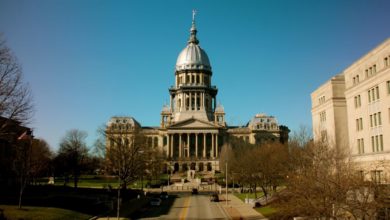California’s budget crisis has hit schools and community college districts extremely hard. Thousands of California teachers received layoff notices in March. These cuts come at a time when California already ranks 46th in the nation for per-pupil spending, and last in the number of counselors, librarians and school nurses per student.
 |
These cuts are on top of escalating punitive measures imposed by the Bush administration’s No Child Left Behind Act of 2001, such as “restructuring” and “Program Improvement.” California now has more than 1,000 persistently “failing schools” that are forced to undergo drastic restructuring.
The NCLB Act transformed federal education funding by attaching it to test score requirements. Measured by standardized testing, schools have to demonstrate “Adequate Yearly Progress.” The AYP measures and ranks the performance of public schools. Under NCLB, states can now close or restructure “underperforming schools”—those that fail to meet the score requirements established by the AYP.
The NCLB’s focus on testing plainly targets schools in low-income communities and communities of color. The NCLB Act requires schools receiving Title I funds to be identified for Program Improvement if AYP criteria—statewide proficiency goals—are not met for two consecutive years.
Title I is the single largest federal education program, originally designed to support schools with high concentrations of poor students. PI funds are taken by diverting funds from Title I away from local schools and districts to state education departments.
Instead of providing significant resources to schools for their improvement, NCLB uses a punitive approach to decertify “failing” schools. Schools failing to meet annual proficiency goals two years in a row enter Program Improvement. After three years, schools face drastic restructuring measures, including the replacement of teachers and staff at the “failing” school. After five years, all or most of teachers of “failing” schools may be replaced. An outside entity may be contracted to operate the school, or it is reopened as a charter school.
Across the country, more than 3,500 schools are in the restructuring phase of Program Improvement this year. In California, of the 6,000 eligible schools, over 4,500 are in Program Improvement. If a school succeeds by meeting the standards for two years in a row, it can exit Program Improvement.
But a study by the Center on Education Policy examining school results in California, Georgia, Maryland, Michigan and Ohio found that once schools go into mandatory restructuring, it is extremely hard for them to exit. In reality, PI is facilitating the privatization of public schools.
For example, in the 2007-08 school years, when the requirement was for only 25 percent of students to score “proficient” at each school, only 14 percent of restructuring schools in California met the academic goals. Cox Elementary School in Oakland entered Program Improvement years ago.
By 2005, the school reopened as an autonomous public charter school that could make its own decisions—an idea erroneously embraced by the U.S. Department of Education as a good move for troubled schools. Three years later, the school has yet to meet its academic targets.
NCLB requires that all students reach academic proficiency by the 2013-14 school year. In California, nearly all the state’s elementary schools will fail to meet that target, in large part because low scores are a reflection of the adverse life conditions of children from oppressed communities—including those who are economically disadvantaged or who have English as a second language—not a measure of the performance of individual schools.
No public education for the poor and oppressed
Decades after the Civil Rights struggle, many schools are still racially segregated, and the courts have struck down many local school board initiatives aimed at integrating schools.
In the racist United States, public schools must rely on local property taxation. Because schools that serve the poor are generally located in areas with low property values, poor children rarely get the same educational opportunities as children from more affluent families.
The real objective of NCLB is to move towards privatization of schools, breaking teachers’ unions and pushing schools to compete in the capitalist market. Privatization seeks to dismantle the public education system in the interest of profit, while workers’ tax dollars are redirected toward corporate priorities.
For the working class, the problems of education cannot be solved by privatization. To the contrary—funding for public education should be expanded with additional resources devoted to schools in the most oppressed communities.
As long as we live under capitalism, a constant struggle will be needed to prevent the ruling class from rolling back the gains made in public education. Socialist countries such as Cuba have shown that high-quality public education for all of society is within reach. Under socialism, workers will not have to fight against the state to preserve public education. Rather, the state will fight alongside the workers to expand and improve education.






